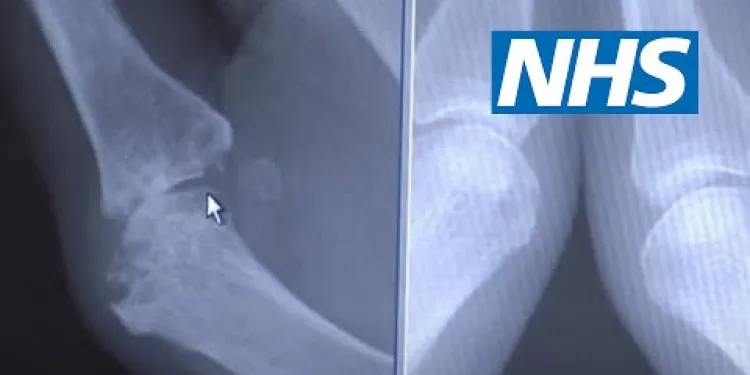
Find Help
More Items From Ergsy search
-

How does post-exertional malaise relate to CFS?
Relevance: 100%
-

Does physical exercise help people with CFS?
Relevance: 57%
-

How does CFS differ from regular fatigue?
Relevance: 57%
-

Can CFS be prevented?
Relevance: 39%
-

What is the prognosis for someone with CFS?
Relevance: 37%
-

Why is it important to increase awareness about CFS?
Relevance: 35%
-

Can CFS symptoms fluctuate over time?
Relevance: 34%
-

Myalgic encephalomyelitis or chronic fatigue syndrome (ME/CFS) | NHS
Relevance: 34%
-

What is chronic fatigue syndrome?
Relevance: 32%
-

Is chronic fatigue syndrome contagious?
Relevance: 30%
-

How is chronic fatigue syndrome treated?
Relevance: 25%
-

Who is at risk of developing chronic fatigue syndrome?
Relevance: 20%
-

Can children develop chronic fatigue syndrome?
Relevance: 20%
-

What role do infections play in chronic fatigue syndrome?
Relevance: 20%
-

Are there psychological aspects to chronic fatigue syndrome?
Relevance: 19%
-

Is chronic fatigue syndrome a mental illness?
Relevance: 15%
-

What causes chronic fatigue syndrome?
Relevance: 13%
-

Can chronic fatigue syndrome be managed with lifestyle changes?
Relevance: 10%
-

How is chronic fatigue syndrome diagnosed?
Relevance: 10%
-

Is there a cure for chronic fatigue syndrome?
Relevance: 9%
-

What are the symptoms of chickenpox?
Relevance: 8%
-

Is the UK government providing guidance on Zika virus for travelers?
Relevance: 8%
-

What are the common symptoms of a cold?
Relevance: 7%
-

Help with tonsillitis
Relevance: 5%
-

Rheumatoid arthritis | NHS
Relevance: 5%
-

Common health questions about chickenpox | NHS
Relevance: 5%
-

What are the symptoms of a nut allergy?
Relevance: 5%
-

What is the Marburg Virus?
Relevance: 5%
-

How do health authorities confirm a Marburg virus outbreak?
Relevance: 5%
-

What are the symptoms of the bubonic plague?
Relevance: 5%
-

Where was the Marburg virus first discovered?
Relevance: 5%
-

What are the symptoms of methanol poisoning?
Relevance: 5%
-

What are the symptoms of a screw worm infestation?
Relevance: 5%
-

What are the symptoms of shingles?
Relevance: 5%
-

What is the prognosis for viral meningitis?
Relevance: 5%
-

What are the symptoms of H3N2 flu?
Relevance: 5%
-

What are the symptoms of West Nile Virus?
Relevance: 5%
-

What are the symptoms of Marburg virus disease?
Relevance: 5%
-

What is the typical progression of Marburg virus disease?
Relevance: 5%
-

Can Marburg virus disease recur after recovery?
Relevance: 5%
Understanding Chronic Fatigue Syndrome (CFS)
Chronic Fatigue Syndrome (CFS), also known as Myalgic Encephalomyelitis (ME), is a debilitating chronic condition characterized by extreme fatigue that can't be explained by any underlying medical condition. This fatigue is not relieved by rest and is of such a magnitude that it severely impacts daily life. People with CFS often experience a range of other symptoms, including sleep problems, muscle or joint pain, headaches, sore throat, and cognitive difficulties.
What is Post-Exertional Malaise (PEM)?
Post-Exertional Malaise (PEM) is a hallmark symptom of CFS/ME that significantly distinguishes it from other conditions associated with fatigue. PEM is an exacerbation of symptoms that occurs following even minor physical or mental exertion. This exacerbation results in a flare-up of debilitating symptoms, often lasting for days or even weeks. The onset of PEM can be immediate or delayed by hours or up to a day, and even everyday activities such as brushing teeth or light reading can trigger PEM in those severely affected.
Relationship between PEM and CFS
PEM is often considered a defining characteristic of CFS/ME. The presence of PEM is crucial for the diagnosis of CFS/ME according to various diagnostic criteria, including the Canadian Consensus Criteria and the International Consensus Criteria. Unlike ordinary fatigue or post-exercise tiredness, PEM involves a profound worsening of symptoms that is disproportionate to the activity level. This can include a surge in physiological, cognitive, and neurological symptoms.
Understanding the Impact of PEM on Patients
For those living with CFS/ME, PEM can be incredibly debilitating and unpredictable. The impact on quality of life is immense, as even minimal effort can result in substantial physical limitations and a marked decrease in functional capacity. This often leads to a cycle of activity limitation and caution known as the "energy envelope" strategy, where individuals must regulate their activity levels to avoid triggering PEM.
Strategies for Managing PEM in CFS
Managing PEM effectively is a key component of living with CFS/ME. Patients are often advised to engage in "pacing," a strategy that involves balancing rest and activity to avoid overexertion. Keeping a health diary, planning activities on 'good days,' and allowing ample recovery time are common strategies. Additionally, healthcare providers recommend careful monitoring of activity levels and gradual adjustments to avoid exceeding one's energy capacity.
Conclusion
In conclusion, post-exertional malaise is a central symptom of Chronic Fatigue Syndrome that plays a crucial role in diagnosis and management. Its unpredictable nature necessitates careful management strategies to help patients maintain the best possible quality of life. As research continues to progress, there is hope for improved understanding and management of this challenging condition faced by many in the UK and worldwide.
Frequently Asked Questions
What is post-exertional malaise (PEM)?
Post-exertional malaise (PEM) is a condition where physical, mental, or emotional exertion leads to a worsening of symptoms that is disproportionate to the activity performed and can last for days or even weeks.
How is PEM related to chronic fatigue syndrome (CFS)?
PEM is a hallmark symptom of chronic fatigue syndrome (CFS), now often referred to as myalgic encephalomyelitis/chronic fatigue syndrome (ME/CFS). It is one of the key diagnostic criteria for the condition.
What triggers PEM in individuals with CFS?
PEM can be triggered by physical activities, mental tasks, or emotional stressors, which are disproportionately taxing for people with CFS.
How long does PEM typically last in CFS patients?
The duration of PEM can vary but commonly lasts for 24 hours or more, and it can persist for days or even weeks in some people.
Are there any specific biomarkers to diagnose PEM?
Currently, there are no specific biomarkers to diagnose PEM. Diagnosis is generally based on patient-reported symptoms.
Can PEM be managed or treated in CFS patients?
Management strategies such as pacing and energy management can help, but there is currently no cure for PEM or CFS. Each patient's approach may differ.
Why is pacing important for managing PEM in CFS?
Pacing helps individuals with CFS avoid overexertion by balancing activity and rest, which can minimize the frequency and severity of PEM.
How is PEM different from general fatigue?
Unlike general fatigue, PEM is characterized by a delayed and prolonged exacerbation of symptoms following exertion, unique to conditions like CFS.
Is PEM only associated with large amounts of physical activity?
No, PEM can be triggered by even small amounts of physical or mental activity that would not typically be exhausting for healthy individuals.
What are some common symptoms experienced during PEM?
Common symptoms include extreme fatigue, muscle and joint pain, cognitive impairments, sleep disturbances, and flu-like symptoms.
Does everyone with CFS experience PEM?
PEM is considered a core symptom, so most people with CFS experience it, although the frequency and severity can vary.
How does PEM affect the quality of life in CFS patients?
PEM significantly affects the quality of life by limiting physical and cognitive functions, restricting social activities, and impacting emotional well-being.
Is exercise recommended for people with CFS experiencing PEM?
Exercise must be approached cautiously. Gentle, paced activity may be beneficial, but overexertion can worsen PEM. Professional guidance is advised.
What role does stress play in PEM for CFS patients?
Stress can exacerbate symptoms and trigger PEM as the body and mind react similarly to physical exertion, worsening overall CFS symptoms.
Can mental exertion alone cause PEM in CFS patients?
Yes, mental exertion can cause PEM. Activities such as reading, writing, or sustained concentration can lead to symptom exacerbation.
What research is being conducted on PEM and CFS?
Research is ongoing to better understand the mechanisms driving PEM in CFS and to find biomarkers and more targeted treatments.
How can one track PEM episodes effectively?
Keeping an activity journal and noting symptoms, triggers, and durations can help patients understand patterns and identify manageable activities.
Do dietary changes help manage PEM in CFS?
Some CFS patients find dietary modifications beneficial, though evidence is anecdotal. Proper nutrition supports overall health, which may help manage symptoms.
What is the difference between PEM in CFS and PEM in other conditions?
While PEM is largely linked to CFS, it can occur in other conditions, but its characteristics and severity may differ and should be evaluated contextually.
What support is available for those experiencing PEM due to CFS?
Support groups, professional healthcare guidance, and online communities provide resources and support for managing CFS and PEM effectively.
Useful Links
- Ergsy carfully checks the information in the videos we provide here.
- Videos shown by Youtube after a video has completed, have NOT been reviewed by ERGSY.
- To view, click the arrow in centre of video.
- Most of the videos you find here will have subtitles and/or closed captions available.
- You may need to turn these on, and choose your preferred language.
- Go to the video you'd like to watch.
- If closed captions (CC) are available, settings will be visible on the bottom right of the video player.
- To turn on Captions, click settings .
- To turn off Captions, click settings again.
More Items From Ergsy search
-

How does post-exertional malaise relate to CFS?
Relevance: 100%
-

Does physical exercise help people with CFS?
Relevance: 57%
-

How does CFS differ from regular fatigue?
Relevance: 57%
-

Can CFS be prevented?
Relevance: 39%
-

What is the prognosis for someone with CFS?
Relevance: 37%
-

Why is it important to increase awareness about CFS?
Relevance: 35%
-

Can CFS symptoms fluctuate over time?
Relevance: 34%
-

Myalgic encephalomyelitis or chronic fatigue syndrome (ME/CFS) | NHS
Relevance: 34%
-

What is chronic fatigue syndrome?
Relevance: 32%
-

Is chronic fatigue syndrome contagious?
Relevance: 30%
-

How is chronic fatigue syndrome treated?
Relevance: 25%
-

Who is at risk of developing chronic fatigue syndrome?
Relevance: 20%
-

Can children develop chronic fatigue syndrome?
Relevance: 20%
-

What role do infections play in chronic fatigue syndrome?
Relevance: 20%
-

Are there psychological aspects to chronic fatigue syndrome?
Relevance: 19%
-

Is chronic fatigue syndrome a mental illness?
Relevance: 15%
-

What causes chronic fatigue syndrome?
Relevance: 13%
-

Can chronic fatigue syndrome be managed with lifestyle changes?
Relevance: 10%
-

How is chronic fatigue syndrome diagnosed?
Relevance: 10%
-

Is there a cure for chronic fatigue syndrome?
Relevance: 9%
-

What are the symptoms of chickenpox?
Relevance: 8%
-

Is the UK government providing guidance on Zika virus for travelers?
Relevance: 8%
-

What are the common symptoms of a cold?
Relevance: 7%
-

Help with tonsillitis
Relevance: 5%
-

Rheumatoid arthritis | NHS
Relevance: 5%
-

Common health questions about chickenpox | NHS
Relevance: 5%
-

What are the symptoms of a nut allergy?
Relevance: 5%
-

What is the Marburg Virus?
Relevance: 5%
-

How do health authorities confirm a Marburg virus outbreak?
Relevance: 5%
-

What are the symptoms of the bubonic plague?
Relevance: 5%
-

Where was the Marburg virus first discovered?
Relevance: 5%
-

What are the symptoms of methanol poisoning?
Relevance: 5%
-

What are the symptoms of a screw worm infestation?
Relevance: 5%
-

What are the symptoms of shingles?
Relevance: 5%
-

What is the prognosis for viral meningitis?
Relevance: 5%
-

What are the symptoms of H3N2 flu?
Relevance: 5%
-

What are the symptoms of West Nile Virus?
Relevance: 5%
-

What are the symptoms of Marburg virus disease?
Relevance: 5%
-

What is the typical progression of Marburg virus disease?
Relevance: 5%
-

Can Marburg virus disease recur after recovery?
Relevance: 5%


